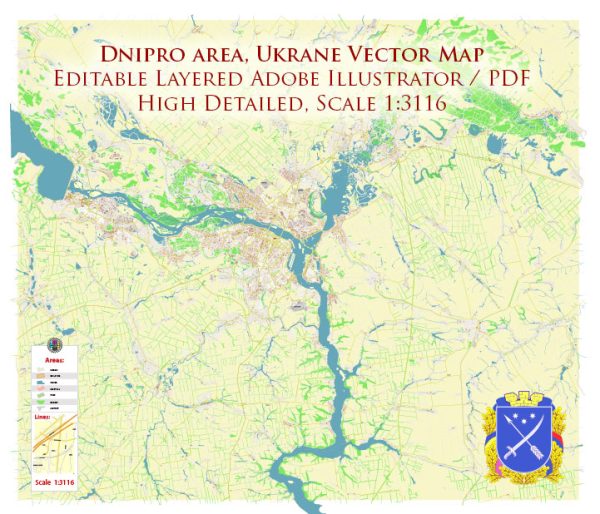Dnipro, formerly known as Dnipropetrovsk, is one of Ukraine’s major cities and serves as the administrative center of the Dnipropetrovsk Oblast in the country’s east-central region. The city has a rich history and plays a significant role in Ukraine’s economic, cultural, and industrial development. Below is a description of Dnipro’s urban development and key features:
- Industrial Heritage: Dnipro has a strong industrial background. Historically, it was a hub for heavy industry, particularly in the production of steel, aerospace, machinery, and chemical manufacturing. While some of these industries have declined in recent years, they still play an essential role in the city’s economy.
- Modernization and Diversification: In recent years, Dnipro has undergone a process of modernization and diversification, moving away from its heavy industrial focus. The city has been working to attract investment in various sectors, including information technology, agriculture, and services. This shift is part of Ukraine’s broader economic transformation.
- Infrastructure: The city boasts a well-developed infrastructure, including a network of roads, railways, and river ports. Dnipro’s central location in Ukraine and its proximity to the Dnieper River have historically made it a critical transportation and logistics hub.
- Education and Culture: Dnipro is home to several universities, cultural institutions, and museums. Dnipro National University, among others, contributes to the city’s intellectual and cultural life. The city hosts various cultural events, including theater productions, art exhibitions, and music festivals.
- Architecture: The city’s architecture reflects its history, with a mix of Soviet-era buildings and more contemporary structures. The city’s skyline features both older, functionalist structures and newer, modern buildings. The construction of high-rise residential complexes has become more common in recent years.
- Parks and Green Spaces: Dnipro offers several parks and green spaces, providing residents and visitors with areas for relaxation and recreation. The city’s location along the Dnieper River also offers opportunities for water-based activities.
- Urban Planning: Like many post-Soviet cities, Dnipro has been working on urban planning and development projects to improve the quality of life for its residents. This includes efforts to revitalize the city center, create pedestrian zones, and enhance public transportation.
- Economic Activities: Dnipro’s economy is diversified, with a focus on manufacturing, finance, IT, and trade. The city is known for its IT sector, which has been growing in recent years, attracting both domestic and international businesses.
- Transportation: Dnipro has a well-developed transportation network. The city is served by an international airport, Dnipro International Airport, and has a railway station connecting it to major Ukrainian cities and international destinations.
- Challenges: Like many Ukrainian cities, Dnipro faces challenges such as infrastructure maintenance, attracting investment, and addressing social and economic disparities. Political and economic factors can also influence the city’s development.
Dnipro’s urban development reflects the broader changes and challenges faced by Ukrainian cities as they transition from a Soviet past to a more modern, diversified, and open future. The city’s rich history and cultural heritage continue to be important aspects of its identity as it evolves in the 21st century.


 Author: Kirill Shrayber, Ph.D.
Author: Kirill Shrayber, Ph.D.